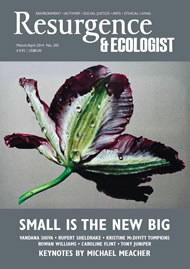This book is particularly valuable for two reasons. First, it covers the whole world, looking at cruelties and anti-cruelty campaigns from Afghanistan to the Arctic. Secondly, because it is up to date, it is also a useful reference book.
Mark Hawthorne examines some of the more forgotten cruelties such as the shooting of captive antelopes, zebras, kangaroos, lions, bears or tigers – often these are the old, half-tame animals no longer wanted by zoos – with guns or, even more cruelly, with bows and arrows, in which case the wounded animal may take an age to die. Such ‘canned hunting’ is booming in the US and South Africa. Big game fishing, where ‘macho’ idiots ‘play’ marlin and swordfish for as long as they can, is also a growth industry. Dog sled racing is growing in Alaska, and hare coursing in Ireland.
Dolphins are still kept in cramped aquariums in South America, and hunted to death with knives and spears in Iceland and Japan. Elephants are injured with bullhooks in India, and in New Zealand many animals have suffered in the making of films. Bears are still baited in Pakistan; orang-utans are forced to kick-box in Thailand, stallions to fight in Indonesia and South Korea, and camels to wrestle in Turkey.
It has been estimated that in Spain, Mexico and other countries, as many as 250,000 bulls a year are still fought to death – or to paralysis, after being stabbed in the neck, then, still conscious, dragged off to a slaughterhouse where they may be skinned alive, unable to move. Animal sacrifice still continues in India. Mass carnage occurs every five years in Nepal to appease the Hindu goddess Gadhimai in rituals during which some 250,000 animals are killed over just two days. And, of course, millions more animals die on the intensive farms and in the laboratories of developing countries as the cruelties of the West sweep across the globe.
Many animals also suffer in the name of so-called art, such as dogs left to starve in performance art, or animals being bludgeoned to death in snuff films. And millions of animals are still employed around the world to draw carts and pull ploughs. With increasing urbanisation their plight is worse than ever. In India, Egypt and Afghanistan, thousands of donkeys work in scorching brick kilns, and elephants are forced to drag timber in Laos and Burma, often in terrible conditions.
In his book, Hawthorne also attacks the inherent cruelty involved in the ‘rape racks’ and the electro-ejaculation used in artificial insemination. The author ends his catalogue of horrors by considering the increasingly clear correlation between sadistic abusers of animals and those who go on to become serial torturers of humans. In one study, 32 out of 44 serial killers (73%) also reportedly abused animals.
Some people seem to think that after all the publicity over animal rights in the last few decades of the 20th century, everything is now all right. It is not. This book is essential reading for anyone who believes that the current status quo regarding the relationship between humans and non-humans is acceptable. Far from it: it is an abomination. Armed with modern technologies, human beings now torment and torture their evolutionary brothers and sisters in a million different ways, daily and continuously.
But do not let me put you off. Out of the 500 pages of this book, at least 400 are more relaxed and without horror stories. Hawthorne gives the addresses of helpful organisations, and governments we should protest to. I believe this is the greatest moral issue of our age – the international mistreatment of our co-inhabitants of this little planet, who are being grossly abused because we, as members of the human race, are too arrogant and greedy to face up to the fact that our species is not the centre of the universe!







